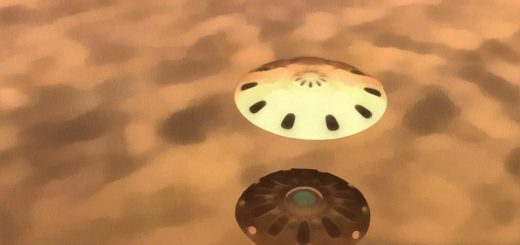Emotions, Telepathy, and the Visual Arts
Part 11

Abductees report that alien emotional range seems to be greatly circumscribed. Why this emotional stunting is so is not known. It is possible that telepathy restricts the range of emotions that can be transmitted and/or received. Whatever the reasons, abductee narratives suggest that aliens’ emotional life falls within narrow parameters. That they do have emotions is widely reported. They seem to display satisfaction, excitement, a limited form of happiness, and even a limited form of fondness. Conversely, they can become frustrated, annoyed, surprised, peeved, and even irritated. Abductees sometimes describe aliens having an extremely rudimentary sense of humor, especially when dealing with human children.
Although aliens obviously possess emotions, their feelings are not variable and expansive enough to encompass what humans rely upon for a normal quality of life. In general, abductees do not report instances when they see aliens crying, becoming enraged, expressing sincere love or unrestrained joy, fighting with each other, or having their feelings hurt. In general they do not display a complex sense of humor and abductees do not report them laughing. Virtually every emotion they display seems to exist within a narrow range. It is conceivable that stronger emotions are present but the aliens hold them rigidly in check. However, with the extremely wide range of abduction accounts now known, this seems unlikely because abductees almost never report “slip-ups” in which the aliens exhibit wider ranges of their emotions even under the most trying conditions when they have physically attacked aliens, refused to cooperate with them, actively resisted them by running, flailing, and so on.
If the aliens actually have this restricted emotional range, it has profound implications for the telepathic society in which they live. Aliens obviously have the sense of sight, but without the emotional range to gratify the senses visually, it is doubtful whether they have developed an art form based on vision. Thus, paintings, drawings, and graphics are conspicuous by their absence within the UFOs’ confines. Strong color, which causes emotional reactions in humans, is almost nonexistent on the walls of UFOs. In fact, abductees report very little aesthetic sense whatsoever in their surroundings on board the UFOs. The rooms, equipment, hallways, and most apparel are functional, clinical, and devoid of artistic expression. The small gray aliens and most of the taller gray aliens dress alike (if they wear anything at all) and fashion design does not appear to be important. The exception to this is the insect-like beings who sometimes wear robes with high collars (some abductees have reported robes with a simple hem design on them). Abductees also report that these beings will sometimes also wear an “amulet” around their neck with a design on it. Whether the design or amulet is merely decorative or for another, perhaps political, social, or technological purpose is unknown.
The aliens’ lack of a nose and mouth (and with evidence of obtaining nutrition by absorption)8suggests the absence of the entire range of sensory satisfaction in which humans indulge through the preparation and ingestion of food. The great cuisines of the world and all the lore, mythology, and day-to-day enjoyment of eating would not be a factor in the aliens’ society. Fragrances by themselves would have little or no meaning. For example, freshly mowed grass, flowers, and the entire range of earthly and animal scents would be lost on aliens.
With a restricted range of emotions–coupled with their lack of ears, noses, or mouths–their society would be more “colorless” than ours. One would expect that the range of emotion-based interactions between the aliens would be limited; events that generate enjoyment, laughter, awe, thrills, and so forth, would either be severely restricted or nonexistent. In this dull world, the texture of alien society would be “flatter” and emptier than that of human society and hence far less stimulating.
It also means that it would be difficult for them to appreciate the role that aesthetics plays in human life. This suggests that a complete understanding of human psychology may be beyond their grasp. They might remain forever outsiders, partially grasping human motivation, but unable to fully comprehend it. (But, they can still use human emotion for their own purposes as they have done so effectively in their neurologically based staring and visualization procedures.)
Thus, the world of art and aesthetics that occupies the lives of so many humans is nonexistent in an alien society. It is entirely possible that there are no art forms like painting, drawing, photography, literature, drama, and performance art. The passionate and complex world of theater, entertainment, sports, or any other area depending on the highs and low of human emotions does not exist in their world. If this is true they would live in a dull, joyless society focused on work, obedience, subservience to the group, and obedience to a structured hierarchy.
________________________
8. See a discussion of alien physiology in Jacobs, Secret Life, and for the possible reasons for the lack of noses in The Threat.
Part 1 Part 2 Part 3 Part 4 Part 5 Part 6 Part 7 Part 8 Part 9 Part 10 Part 11 Part 12 Part 13



 Creators of mankind
Creators of mankind Description of “Tall white aliens”
Description of “Tall white aliens” Where they came from?
Where they came from? About hostile civilizations
About hostile civilizations The war for the Earth
The war for the Earth “Tall white aliens” about eternal life
“Tall white aliens” about eternal life Video: “Nordic aliens”
Video: “Nordic aliens” Aliens
Aliens Alien encounters
Alien encounters The aliens base
The aliens base UFO
UFO Technology UFO
Technology UFO Underground civilization
Underground civilization Ancient alien artifacts
Ancient alien artifacts Military and UFO
Military and UFO Mysteries and hypotheses
Mysteries and hypotheses Scientific facts
Scientific facts


















